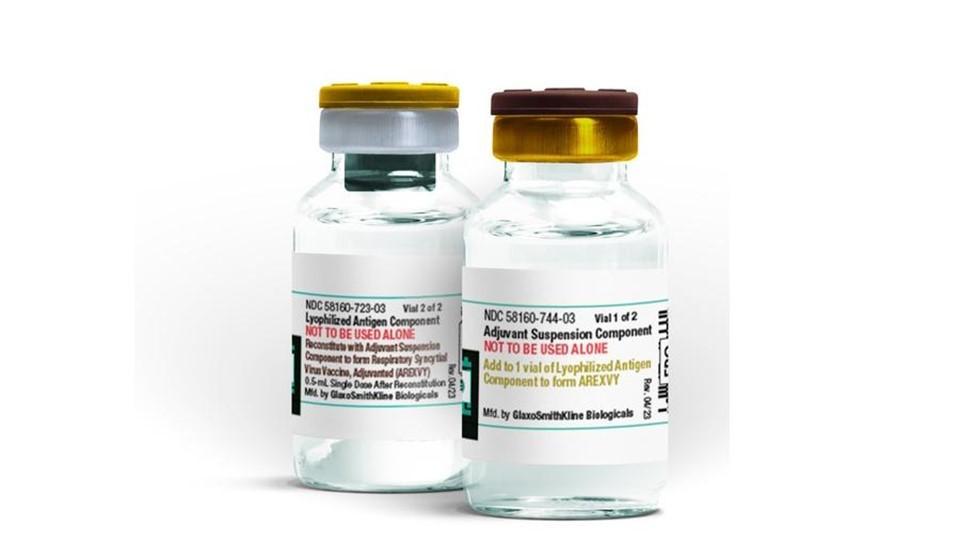Rethinking patient noncompliance (Part 1)

Allan Showalter, MD
AlignMap
Recognized as a problem since the beginnings of medicine, patient noncompliance has been and continues to be a healthcare catastrophe, costing billions of dollars yearly and causing morbidity and mortality at rates that would be deemed epidemic if linked to a specific pathogen. Decades of research and centuries of clinical experience have failed to produce widely applicable methodologies that significantly, reliably, and enduringly enhance compliance. Nor has a foundation been laid for the progressive growth of knowledge about and ability to manage treatment adherence. Medical science even lacks a useful conceptualization of patient compliance beyond that of a public health statistic.
The first step, in fact, toward effectively increasing the proportion of treatment plans that are adequately implemented is to reorganize how stakeholders in healthcare think about patient compliance.
Four fundamental percepts explicate the predominate – and dysfunctional - concept of patient compliance and offer clues to possible solutions.
1. Patient compliance, as described by its standard definition, is a useful statistical measure but an inadequate and often counterproductive explanatory concept.
The definition of compliance articulated in “Interventions to Enhance Patient Adherence to Medication Prescriptions”1 is characteristic of how compliance and similar terms are used in the professional literature:
“Adherence may be defined as the extent to which a patient's behavior (in terms of taking medication, following a diet, modifying habits, or attending clinics) coincides with medical or health advice. If a patient is prescribed an antibiotic for an infection to be taken as 1 tablet 4 times a day for a week but takes only 2 tablets a day for 5 days, the adherence would be 36% (10/28). The term adherence is intended to be nonjudgmental, a statement of fact rather than of blame of the prescriber, patient, or treatment. Compliance and concordance are synonyms for adherence.” [emphasis mine]
"Decades of research and centuries of clinical experience have failed to produce widely applicable methodologies that significantly, reliably, and enduringly enhance compliance."
Implicit in this simple definition are four critical but often overlooked postulates:
A. Noncompliance takes place whenever the patient’s actions differ from the prescribed treatment plan - regardless of the reason. Consequently, noncompliance, whether intentional or unintentional, is a final common pathway for a huge number of disparate processes, which may be acting alone or in combination. Noncompliance may be the result of a careful, valid intellectual consideration, an unscientific cultural conviction, forgetfulness, a miscommunication between patient and physician, a patient’s mistrust of a pharmaceutical manufacturer, a pharmacy’s error, an inability to pay for treatment, a psychotic delusion, a misread label, or any of an infinite number of other possible causes. (An elaboration of the extent and heterogeneity of the behaviors subsumed under the appellation of noncompliance can be found at Patient Compliance - so wrong for so long.)
B. Nothing in this definition assigns a moral obligation to the patient to follow those recommendations or to the clinician who makes those recommendations to enforce them.
C. This definition does not suggest nor does evidence support the notion that noncompliance with healthcare recommendations differs qualitatively from noncompliance with seatbelt recommendations, child rearing recommendations, dental hygiene recommendations, auto recall recommendations (sent to car owners), speed limit recommendations, safe investment and debt avoidance recommendations, home maintenance recommendations etc.
D. As defined here, nonadherence as a statistic measure, independent of the cause of the nonadherent behavior, is useful because it is helpful to know how many doses of medication X a given patient took as prescribed. That same definition, however, limits the utility of nonadherence to its function as a statistic. A patient’s nonadherence rate offers no more clues to the most effective adherence enhancements for that patient than a baseball player’s batting average provides about how to improve his performance at bat.
Key Point: The term patient noncompliance, by definition, is no more than a descriptive label given to a phenomenon and indicates nothing about the cause of that phenomenon. For a scientific elucidation of the issue, I recommend Medication Compliance and Persistence: Terminology and Definitions2. The article is a short, straightforward, and worthwhile read, from which I have excerpted a single sentence that succinctly summarizes the core issue:
Health outcome and cost-effectiveness analyses incorporating measures of medication usage have been hampered by the lack of uniformity in standards of definitions and measurements used to describe the concepts of medication compliance or persistence.
2. Noncompliance leads to inadequate implementation of treatment recommendations, which itself leads to devastating economic and personal consequences.
Patient noncompliance in the US alone increases healthcare costs by $300 billion annually. The following examples of costs due solely to patient noncompliance are taken from scores of similar statistical bullet points.
Patient noncompliance is responsible for:
• 10-25% of hospital &, nursing home admissions, resulting in 340 deaths per day
• 20% of unintentional pregnancies in the US at a cost of $2.6 billion
• A threefold increase in doctor visits and $2000 per year in additional costs per patient (compared to patients who follow their treatment plans)
• 33-69% of all medication-related hospital admissions in the US at a cost of $100 billion
Moreover, because of the complexity and interdependent nature of the contemporary healthcare system, the impact of patient noncompliance is rarely limited to the cost of one medical treatment - that would have been successful if implemented correctly - rendered ineffective by nonadherence. Instead, any treatment failure caused by noncompliance is subject to an array of multipliers, some obvious and some invisible, that can easily increase the potential fiscal, physiological, and social cost exponentially and connections, both direct and indirect, that distribute a similar range of losses to others.
"Patient noncompliance in the US alone increases healthcare costs by $300 billion annually."
Key Point: Characterizing the financial, physiological, and social costs of patient noncompliance as catastrophic is neither hyperbole nor hysteria, just fact.
3. Patient noncompliance is, by any measure and from any perspective, pervasive and difficult to detect.
Any patient, regardless of intelligence, age, socioeconomic status, healthcare experience, diagnosis, severity of the disorder being treated (including instances in which noncompliance dramatically increases the risk of significant impairment or death), the prescribed treatment, the skill level and bedside manner of the clinicians, nationality, educational level, astrological sign etc. is at high risk for noncompliance.
Patient self-reports, pill counts, prescription refills, and similar techniques, the tactics typically employed to calculate compliance rates, are each inherently and significantly flawed. Further, the accuracy of healthcare professionals, however competent and empathic, in determining if a patient is compliant or noncompliant with treatment has been shown to be equivalent to that obtained from flipping a coin.
Electronically monitored medication packaging does routinely achieve more accurate results but falls short of a gold standard (electronic packaging, for example, detects, at best, the removal of the medication from the package, not the patient taking the medication). Direct observation of each prescribed dose is the most accurate monitoring that is, at least for some cases, cost-efficient, practical, and currently available. Surgically implanted mechanisms that monitor tagged drugs in the blood stream are under development, but it is difficult to conceive their routine use other than with limited patient populations.
The only absolute criterion for patient noncompliance is that a clinician has made a treatment recommendation to a patient. Once that’s accomplished, it’s a numbers game, as the number of patients receiving a treatment recommendation increases, the likelihood of noncompliance quickly approaches certainty.
Key Point: While patient compliance varies, a reasonable expectation, absent evidence to the contrary, is an average compliance rate of 50%.
4. No practical methodology has been shown to significantly, reliably, and enduringly enhances compliance for a diverse patient population.
The most damning evidence of the ineffectiveness of contemporary compliance enhancement theories and programs is the absence of their influence on day to day clinical practice. Patient compliance is only rarely a discrete topic in clinical discussions. Even less often do clinicians (other than those treating a few special populations, such as HIV infected patients and organ transplant candidates) implement specific interventions with the goal of managing noncompliance.
"…the accuracy of healthcare professionals, however competent and empathic, in determining if a patient is compliant or noncompliant with treatment has been shown to be equivalent to that obtained from flipping a coin.”.
While it is undeniably tricky to prove the absence of an effect by the multiple and varied compliance enhancement methodologies put into place at one time or another on a system as ambiguous, variegated, and unwieldy as American healthcare, a reasonable indicator is available in the form of a consensus of the pertinent literature. The following passage from a Cochrane Review3 is representative of the conclusions of the overwhelming majority of scholarly and clinical reviews:
“Several complex strategies, including combinations of more thorough patient instructions and counseling, reminders, close follow-up, supervised self-monitoring, and rewards for success can improve adherence and treatment outcomes. However, these complex strategies for improving adherence with long-term medication prescriptions are not very effective despite the amount of effort and resources they consume."
Key Point: Many methodologies designed to enhance compliance are effective - for some patients some of the time, none of these methodologies are effective for most patients most of the time. Further, no methodologies have been demonstrated to predict which patients will and will not follow treatment recommendations or which patients will respond to which compliance enhancement techniques.
Summary &, solutions
Noncompliance with treatment is an economic and fiscal catastrophe for individual patients and healthcare in general. While “patient compliance,” however, is a useful statistical measure, it is profoundly flawed as an explanatory concept. Further, detection of noncompliance, which pervades every patient population regardless of demographics, diagnosis, treatment, or clinicians, is difficult and rarely accurate. Finally, decades of effort have resulted in little that pragmatically improves compliance.
So, is there any hope for a solution?
Well, of course there is. That’s why there’s a Part 2!
Part 2 of this article is now live on the site here.
References:
1. Interventions to Enhance Patient Adherence to Medication Prescriptions, Heather P. McDonald, BSc, Amit X. Garg, MD, MA, R. Brian Haynes, MD, PhD. JAMA. 2002,288:2868-2879.
2. Hasford J. Biometric issues in measuring and analyzing partial compliance in clinical trials. In: Cramer, JA, Spilker, B, eds. Compliance in Medical Practice and Clinical Trials. New York: Raven Press, 1991.
3. Haynes RB, McDonald H, Garg AX, Montague P. Interventions for helping patients to follow prescriptions for medications. Cochrane Database of Systematic Reviews 2003, Issue 4
About the author:
Allan Showalter, MD is a psychiatrist who became interested in patient compliance during medical school in the 1970s. After reading extensively about the topic and observing how instances of noncompliance played out in his private practice and in the hospital and outpatient environments he oversaw administratively, Dr. Showalter became convinced that the prevailing compliance theories and adherence-enhancement methods had to be revised if significant improvements were to take place. For the past four years, Dr. Showalter has been writing about patient compliance at AlignMap.com.
Is pharma doing enough to understand compliance?











